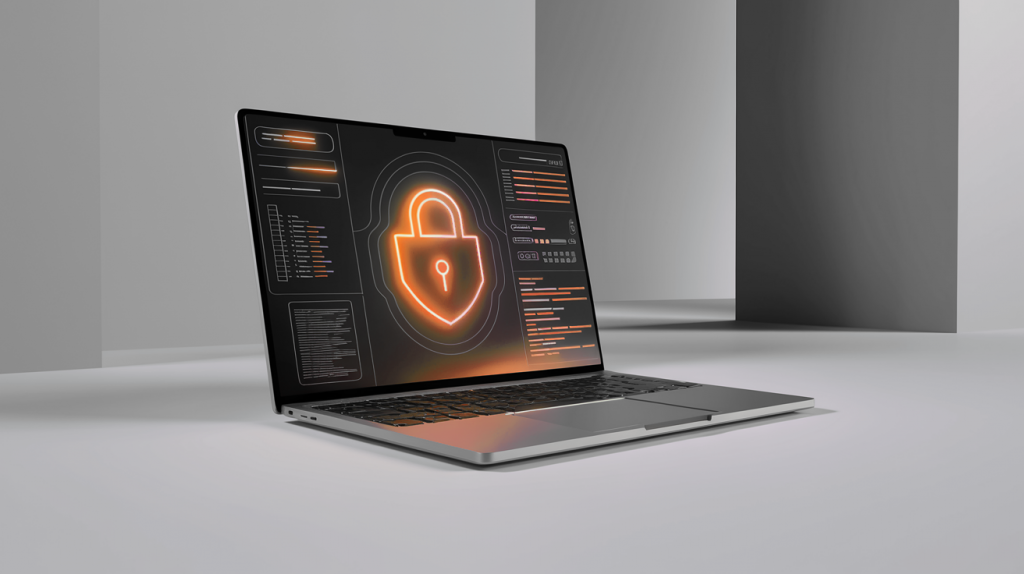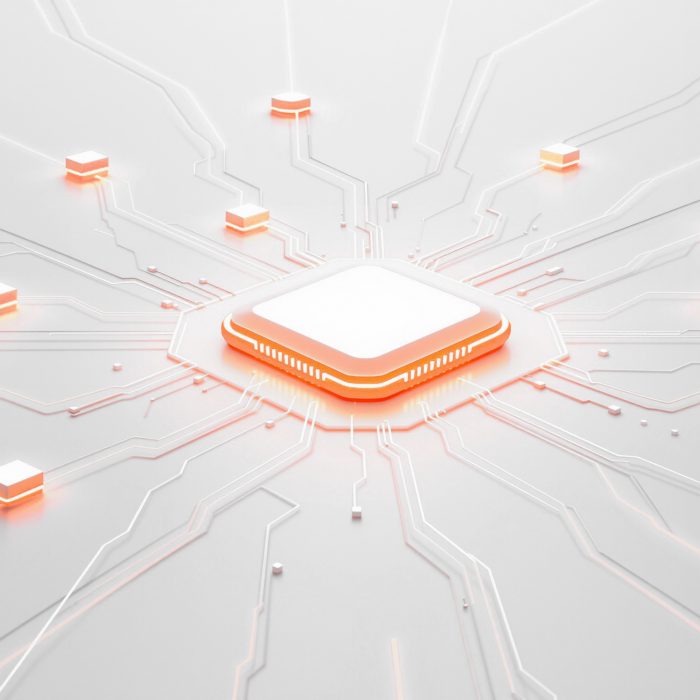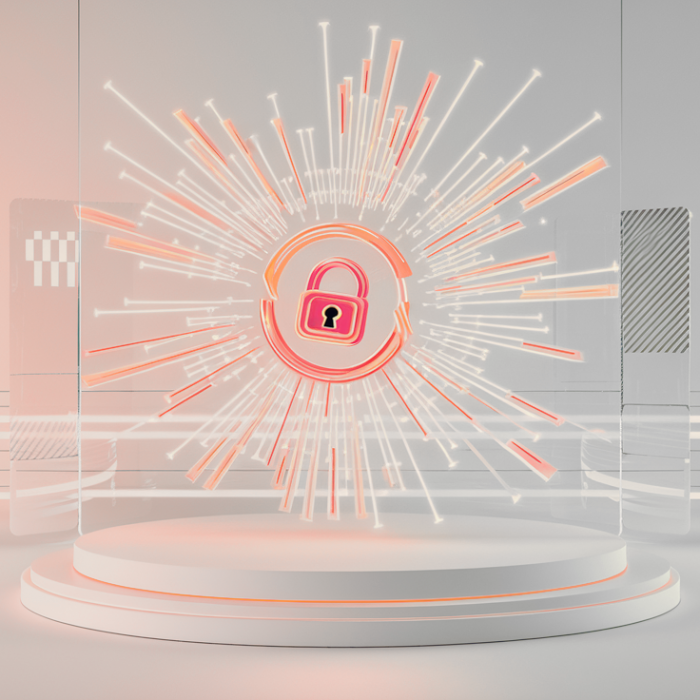Your employees are working from coffee shops, home offices, and co-working spaces around the globe, accessing company data from laptops, smartphones, tablets, and even IoT devices. Each of these endpoints represents a potential gateway for cybercriminals to infiltrate your corporate network.
With 68% of organizations having experienced one or more endpoint attacks that successfully compromised data in recent years, this isn’t some distant threat you might face someday. It’s happening right now, to companies just like yours.
Definition of Endpoint Security
Endpoint security is an essential part of any Privileged Access Management strategy, protecting all the devices that connect to your network from outside your office firewall. Think laptops, phones, tablets, servers, and yes, even that smart coffee machine in the break room.
Unlike traditional antivirus that sits on one computer hoping for the best, endpoint security takes a bird’s-eye view. It gives IT teams a way to see and control all those devices, whether they’re on your desk or halfway around the world.
Here’s what counts as an endpoint these days:
- Desktop and laptop computers
- Smartphones and tablets
- Servers and workstations
- IoT devices (cameras, sensors, smart equipment)
- Wearable tech
- Network printers and scanners
- Cloud workloads and virtual machines
The list keeps growing as more devices get “smart” and connect to networks.
Why Endpoints Have Become a Major Target
The average cost of a data breach hit $4.88 million in 2024. But the real problem isn’t just the money (though that’s obviously a big factor too). Modern cyberattacks don’t stop at stealing data – they shut down entire operations.
When attackers target endpoints, they’re going after the weakest links in your security chain. Your corporate network might have enterprise-grade firewalls and intrusion detection systems, but that home laptop connecting through someone’s unsecured Wi-Fi? That’s a different story entirely.
The old security model assumed threats came from outside your network perimeter. Build a strong wall, control what goes in and out, and you’re protected. Remote work broke that model completely (and it’s why zero trust architecture is so important). Now your “perimeter” includes every coffee shop, home office, and airport lounge where your employees work.
Data is also more distributed than ever before. Information flows between on-premises servers, cloud applications, mobile devices, and third-party services. Each connection point represents another potential attack vector that needs protection.
The Most Common Endpoint Security Threats
While this is by no means an exhaustive list, here are several threats that endpoints are especially vulnerable to.
Malware That’s Getting Smarter
Today’s malware isn’t the crude viruses of the past. Modern attacks use sophisticated techniques to avoid detection, often hiding in legitimate-looking files or processes. They can sit dormant for weeks or months before activating, making detection even more challenging.
Ransomware deserves special attention because it’s particularly devastating. When attackers encrypt your files and demand payment, you’re not just dealing with stolen data. You’re looking at complete operational shutdown until you can restore from backups or pay the ransom. Even then, 92 of organizations that pay still don’t get all their data back, and some never fully recover their operations.
Zero-Day Exploits
These attacks target vulnerabilities that software vendors don’t know about yet, making them impossible to patch until after they’re discovered. Traditional signature-based antivirus is useless against zero-day threats because there’s no known signature to detect.
Zero-day attacks are especially dangerous because attackers have a window of opportunity to exploit these vulnerabilities before security vendors can develop countermeasures. During this window, even fully patched and updated systems can be compromised.
Insider Threats and Human Error
Not all threats come from external attackers. Sometimes the biggest risk comes from inside your organization, whether it’s a disgruntled employee with admin access or a well-meaning worker who falls for a social engineering attack.
Human error remains one of the most significant factors in successful cyberattacks. An employee who downloads malicious software thinking it’s a legitimate business application can compromise an entire network.
The Mobile Device Challenge
Here’s where endpoint security gets really complicated. The majority of your employees are using personal devices for work, and these devices present unique security challenges that traditional endpoint protection wasn’t designed to handle.
Personal devices often lack enterprise-grade security controls. They might not have encryption enabled, could be running outdated operating systems, or might have risky applications installed alongside legitimate work software. Users also tend to connect these devices to unsecured public Wi-Fi networks, creating additional attack vectors.
Phishing That Targets Mobile Devices
Related to the above, phishing attacks have evolved to specifically target mobile users. 18% of successful phishing attacks now happen on mobile devices, where people are more likely to click suspicious links without carefully examining them.
Mobile phishing is particularly effective because people are often multitasking, using smaller screens, and working in distracting environments. That urgent email from the CEO requesting a wire transfer looks a lot more legitimate on a phone screen at 6 PM.

Core Components of Endpoint Security Solutions
Modern endpoint security goes far past traditional antivirus protection. Today’s solutions combine multiple security layers that work together to provide protection:
Comprehensive Audit and Reporting
Effective endpoint security needs detailed visibility into what’s happening on your devices. Modern solutions provide full audit trails of user activities, software installations, and system changes, enabling security teams to investigate incidents and demonstrate compliance with regulatory requirements.
Quality solutions include inventory management that tracks all installed software, hardware configurations, and user permissions across your entire endpoint fleet. This visibility is crucial for understanding your security posture and identifying potential vulnerabilities before they can be exploited.
Centralized Management and Visibility
IT teams need a unified view of all endpoint devices, regardless of their location or operating system. Modern endpoint security platforms provide dashboards that show device status, security compliance, and user activity across the entire organization.
This centralization is particularly important for organizations with remote workers or BYOD policies, where devices may be scattered across different locations and network environments. Without central visibility, security teams can’t effectively manage their endpoint security posture.
Privilege Management and Access Control
One of the most effective ways to reduce endpoint security risks is controlling who has administrative access and when they can use it. Rather than giving users permanent admin privileges (which dramatically increases security risks), modern solutions provide just-in-time privilege elevation for specific tasks.
For example, Admin By Request’s EPM solution can automatically revoke local admin rights while still allowing users to elevate applications when needed. Machine learning capabilities can automate approvals for applications that have been safely elevated multiple times before, streamlining the user experience while maintaining security controls.
File Reputation and Malware Checking
Advanced endpoint security solutions can check files against threat intelligence databases before allowing them to execute with elevated privileges. For instance, some solutions integrate with services like OPSWAT MetaDefender to check files against databases from multiple antivirus vendors in real-time, blocking suspicious or malicious files before they can cause damage.
This pre-execution checking is particularly valuable for privilege elevation scenarios, where malicious software could cause significant damage if allowed to run with administrative rights.
Automated Workflows and Approval Processes
Effective endpoint security solutions include automated workflows that can handle routine security tasks without constant human intervention. This might include automated approval processes for software installations, scheduled reporting of security events, or integration with existing ticketing systems for approval workflows.
These automation capabilities help reduce the burden on IT teams while ensuring consistent security policy enforcement across all endpoints.
Identity Verification and Access Control
Modern endpoint security incorporates verification principles that ensure only authorized users can perform privileged actions. This includes multi-factor authentication requirements for elevation requests, device compliance checking to ensure endpoints meet security standards, and user identity verification before granting administrative access.
Rather than providing permanent privileges, these systems require users to verify their identity each time they need elevated access, creating a more secure approach to privilege management.
Remote Work Security Implications
The shift to remote work made endpoint security more important than ever. Most successful ransomware attacks now originate from unmanaged devices, highlighting how remote endpoints have become the primary attack vector.
Network Security Challenges
Like we mentioned earlier, remote workers routinely access corporate data through home networks, public Wi-Fi, and other connections that lack enterprise-grade security controls. Home routers often use default passwords, public networks may be completely unencrypted, and shared connections can expose data to family members or neighbors.
IT teams have limited visibility into these remote network environments and can’t apply the same security controls they use in corporate offices. This creates blind spots where attacks can develop and spread without detection.
Device Management Complexity
Managing security across distributed endpoints is exponentially more complex than protecting devices within a controlled office environment. Remote devices may not receive timely security updates, could have unauthorized software installed, or might be shared with family members who inadvertently introduce security risks.
The lack of physical access makes troubleshooting and incident response more challenging. IT teams can’t simply walk over to examine a problematic device or perform hands-on remediation when security incidents occur.
Compliance and Data Protection Challenges
Remote work environments make it much harder to ensure compliance with data protection regulations. Sensitive information may be stored on personal devices, transmitted over unsecured networks, or accessed in locations where unauthorized individuals could observe confidential data.
Organizations need endpoint security solutions that can maintain detailed audit trails, enforce data encryption, and provide granular control over how sensitive information is accessed and shared across remote endpoints.

Best Practices for Protecting Endpoints
Implementing effective endpoint security requires a combination of technology, policies, and user education. Here are the most important steps you can take to strengthen your endpoint security posture:
1. Implement Strong Authentication
Don’t rely on passwords alone. Multi-factor authentication significantly reduces the risk of credential-based attacks by requiring additional verification factors. Some organizations also implement MFA for privilege elevation requests in high-security environments, though this needs to be balanced against user productivity and the frequency of elevation requests.
2. Maintain Current Security Updates
Keep operating systems, applications, and security software updated across all endpoint devices. While this sounds obvious, it’s surprisingly challenging when you have devices scattered around the world. Automated patch management systems can help deploy critical updates without relying on users to remember.
3. Deploy Modern Endpoint Security Software
Choose solutions that address the specific security challenges your organization faces. This might include privilege management tools to control admin access, mobile device management for BYOD environments, or specialized solutions for specific compliance requirements.
4. Establish Clear Device Policies
If you allow personal devices for work use, establish clear policies governing their security requirements. Cover acceptable use guidelines, required security configurations, incident reporting procedures, and consequences for policy violations. Make sure employees understand their responsibilities and the associated risks.
5. Provide Regular Security Training
Human error remains a significant factor in successful cyberattacks. Regular security awareness training helps employees recognize phishing attempts, understand safe computing practices, and respond appropriately to security incidents. Make training engaging and relevant rather than boring compliance exercises.
6. Implement Network Segmentation
Use network segmentation to limit the potential impact of compromised endpoints. Implement Zero Trust principles where devices must continuously prove their trustworthiness before accessing network resources. This prevents attackers from moving laterally through your network even if they compromise an endpoint device.
Business Impact of Strong Endpoint Security
Investing in robust endpoint security delivers measurable benefits that extend well past preventing cyberattacks:
Operational Continuity
Effective endpoint protection prevents disruptive attacks that can shut down business operations for weeks or months. The cost of business disruption often far exceeds the direct costs of incident response and remediation.
When systems are compromised, companies face lost productivity, missed deadlines, disrupted customer service, and potential loss of business to competitors. Some organizations never fully recover their operations after major security incidents.
Regulatory Compliance
Most industries have specific data protection requirements that endpoint security helps satisfy. Healthcare organizations must comply with HIPAA, financial institutions face strict regulatory oversight, and companies handling European customer data must meet GDPR requirements.
Endpoint security solutions provide the encryption, access controls, audit logging, and data loss prevention capabilities needed to demonstrate compliance. Many solutions include pre-configured templates for common regulatory frameworks, simplifying the implementation of required security controls.
Customer Trust and Competitive Advantage
Data breaches can permanently damage customer relationships and brand reputation. Organizations with strong security postures can use their security capabilities as competitive differentiators, particularly in industries where data protection is a primary customer concern.
Customers increasingly expect companies to protect their personal information responsibly. Security incidents can result in customer churn, negative publicity, and long-term reputational damage that extends far past the immediate costs of the breach.
Choosing the Right Endpoint Security Solution
When you’re shopping for endpoint security solutions, focus on these critical areas:
- Coverage and Compatibility: Ensure the solution protects all device types in your environment, including Windows and Mac computers, iOS and Android mobile devices, and various IoT endpoints
- Management and Visibility: Look for centralized management that provides unified visibility and control across all endpoints through an intuitive dashboard
- Integration Capabilities: The solution should work well with your existing security tools and IT infrastructure
- Scalability and Performance: Choose solutions that can grow with your organization without degrading system performance
- Vendor Support and Expertise: Evaluate the vendor’s track record for customer support and quality of threat intelligence
Getting Started
Modern threats require modern solutions that can detect unknown attacks, manage distributed devices, and respond automatically when incidents occur. Whether you’re protecting a handful of devices or thousands of endpoints across multiple locations, investing in proper endpoint security today costs far less than dealing with a successful cyberattack tomorrow.
The good news? Endpoint security technology has advanced dramatically, making it easier than ever to protect your organization without hindering productivity. The key is choosing solutions that fit your specific needs and implementing them as part of a broader security strategy that includes employee training, clear policies, and regular security assessments.
If you’re interested in seeing our Endpoint Privilege Management product in action, book a demo today, or download our Free Plan to test it yourself.
Endpoint Security FAQs
Q: What’s the difference between endpoint security and traditional antivirus?
A: Traditional antivirus looks for known bad files using signatures. Endpoint security takes a broader approach that includes centralized device management, user privilege control, and comprehensive audit logging across all your endpoints. Modern endpoint security solutions include features like privilege management, device inventory, audit trails, and policy enforcement that go far past what traditional antivirus can provide, while still integrating its core functionalities.
Q: How does endpoint security handle personal devices used for work?
A: Modern solutions can create secure “work containers” on personal devices through mobile device management (MDM) and mobile application management (MAM). Your work stuff stays protected and separate from personal apps and data. IT gets the security controls they need without monitoring personal activities, photos, or messages.
Q: Can endpoint security solutions work when devices aren’t connected to the internet?
A: Yes. Quality endpoint security solutions store security policies and threat detection algorithms locally on each device, enabling continued protection during network outages or when traveling. When connectivity is restored, devices automatically sync with the central management platform to receive updates and upload security event logs.
Q: How often should we update our endpoint security policies?
A: Review and update policies quarterly or whenever significant changes occur in your threat landscape, business operations, or technology infrastructure. The underlying security software should receive automatic updates for threat signatures and detection algorithms, but organizational policies regarding access controls and incident response procedures may need periodic adjustment.
Q: Do small businesses need enterprise-level endpoint security?
A: Small businesses have actually become primary targets for cybercriminals because they often have weaker security defenses than larger organizations. While you might not need all the advanced features of enterprise solutions, you definitely need more protection than basic antivirus can provide. The key is finding solutions that provide strong protection without overwhelming limited IT resources.
Q: How does endpoint security support compliance requirements?
A: Endpoint security solutions support regulatory compliance through data encryption for information at rest and in transit, detailed access controls ensuring only authorized users can access sensitive data, audit logging that provides complete records of user activities and system events, and data loss prevention that prevents unauthorized data exfiltration. Many solutions include pre-configured compliance templates for frameworks like GDPR, DORA, and ISO 27001.







